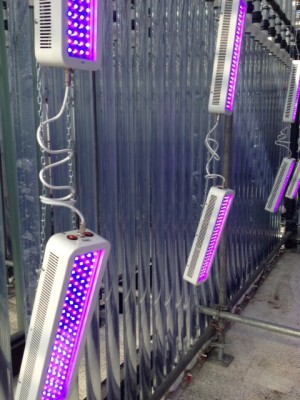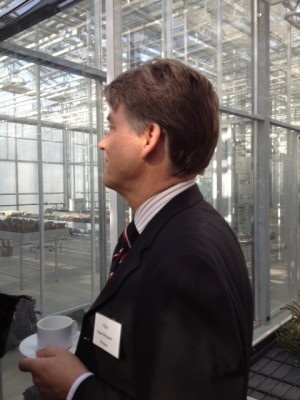In our minds, Photanol is one of the potential winners among start-ups, the company owned by professors Joost Texeira de Mattos and Klaas Hellingwerf of the University of Amsterdam. Their ‘third generation’ company produces all kinds of chemicals, like lactic acid and many other base products, using cyanobacteria, a kind of algae. For the time being the yield is expressed in grams or even much less. Therefore, do not expect to find a biobased cracker of a large biorefinery at their premises, although they claim to run the largest third generation photo bioreactor in the world. But the elegance of their process and the design of their little pilot plant are impressive. And at each presentation, they present a new angle or show that they have moved on.

If you check this site on a regular basis, you know Photanol. This week one of the founders, Klaas Hellingwerf, a biologist at the Swammerdam Institute of Life Sciences, debated Joost Reek, a chemist at the Van ‘t Hoff Institute in homogeneous and supramolecular catalysis, and a professor at Amsterdam as well. Their subject was the best way to capture CO2 using sunlight, producing electricity, fuels or chemicals. Reek showed that (bio)fuels are the best way to store solar energy, e.g. in the form of methanol, methane or hydrogen. Those fuels are produced by reversing the reaction fuel + oxygen yields carbon dioxide + water. Reek does so by chemical catalysis (artificial photosynthesis, artificial leaf); Hellingwerf and Photanol do so using a biological process.
Produce anything from light and CO2
Although the differences might seem to be small, they are real. Chemical catalysts are expensive and scarce. Of course chemists like Joost Reek look for other opportunities, and they do develop them, but as Klaas Hellingwerf remarked: ‘using the biological pathway, we do not need to synthesize our catalysts. And on top of that, the one-step transfer of four electrons on CO2 is quite difficult, whereas nature solved that problem for us.’ On the other hand: the efficiency of cyanobacteria with regards to incident light will not exceed 5%, whereas in due time artificial photosynthesis might be more efficient. ‘Do not underestimate the chemists,’ Joost Reek says. ‘Our present artificial leaves have a 5% efficiency, but our aim is to raise this to 20 to 40%, and we intend to develop catalysts from much cheaper materials like iron rust.’

The ‘genetic cassettes’ which the Photanol researchers introduce in their modified cyanobacteria, allow them to produce anything from light and CO2, like ethanol, ethylene, 1-butanol, 2-butanol, isobutanol, isoprene, 2,3 butanediol and isobutyraldehyde. One of the Photanol PhD researchers even develops the production of lactic acid along this pathway, ‘the market price being five times that of ethanol.’ ‘Our ‘cell factor concept’ allows us to produce ethanol directly from CO2, without the intermediate of biomass, and at a projected 95% efficiency on CO2,’ says Klaas Hellingwerf. ‘And the yields might be enormous: the biomass pathway produces 5000 liters of ethanol per hectare per year, which might increase to a possible 150 000 liters using cyanobacteria. And we do not have any problems in our mineral balance, and do not compete with food production.’ That explains why at Photanol, they regard CO2 as the new feedstock. Classical microbiology produces its products from sugar, ultimately from CO2 absorbed by plants, but the people at Photanol judge this to be a roundabout way. ‘CO2 is the new sugar.’
No problems in the minerals balance
Another success factor might be that Photanol does not harvest its cyanobacteria. Harvesting algae is a bottleneck in many business cases. Photanol does not harvest, but ‘milks’ its production horses. The organism deposits the yield outside, in the ‘reactor fluid’ (an aqueous solution). If the product is gaseous (like hydrogen or ethane), it simply escapes and can be retrieved. If the product remains in the solution, further membrane separation is required. And, please note: the mineral balance does not get disturbed; phosphorus and nitrogen are active in the bacterial process, play their role in reproduction, but do not end up in the product.
Photanol will not make its breakthrough on the energy market tomorrow; but Klaas Hellingwerf feels that their goals should be accomplished within twenty years. Their problem is that government does not value the opportunities in this kind of forerunner research. Recent Dutch policy changes amount to cutting research spending in order to reduce the government deficit. Hellingwerf nor Reek judge this to be beneficial to innovation. ‘And the business community, having set its eye on the prospects of shale gas, now tends to regard our type of research as something for the distant future.’ That does not sound good at all.
